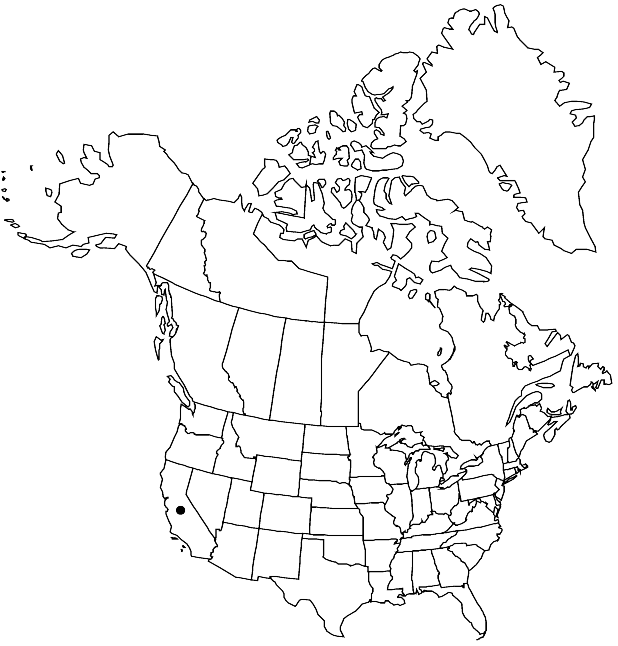Draba saxosa
Bull. S. Calif. Acad. Sci. 19: 11. 1920.
Perennials; (cespitose); caudex branched (covered with persistent leaves); scapose. Stems unbranched, 0.5–1.5 dm, pubescent throughout, trichomes simple and long-stalked, 2-rayed, 0.3–1 mm, with smaller, 2–4-rayed ones, 0.1–0.5 mm. Basal leaves rosulate; petiolate; petiole base and margin ciliate, (trichomes simple, 0.5–1.2 mm); blade oblanceolate, 1–3.1 cm × 2–7 mm, margins entire, surfaces densely pubescent, abaxially with stalked, (2–)4-rayed trichomes, 0.2–0.8 mm, adaxially mostly with long-stalked, 2-rayed trichomes, 0.6–1.3 mm, sometimes with simple and 3- or 4-rayed ones. Cauline leaves 0 (or 1); sessile; blade oblong, margins entire, surfaces pubescent as basal. Racemes 12–43-flowered, ebracteate, elongated in fruit; rachis not flexuous, pubescent as stem. Fruiting pedicels divaricate to ascending, straight or curved, (6–)10–17 mm, pubescent as stem. Flowers: sepals oblong, 2–2.5 mm, pubescent, (trichomes short-stalked, 2–4-rayed); petals yellow, linear-oblanceolate, 3–3.5 × 0.5–1 mm; anthers oblong, 0.5–0.6 mm, (exserted). Fruits oblong to linear-oblong, slightly twisted or plane, flattened, 6–10 × 2.5–4 mm; valves pubescent, trichomes short-stalked, cruciform, 0.07–0.25 mm, sometimes with fewer, 2- or 3-rayed ones; ovules 8–24 per ovary; style (0.8–)1.2–3.5 mm. Seeds oblong, 1–1.2 × 0.6–0.8 mm.
Phenology: Flowering Jun–Jul.
Habitat: Among rocks
Elevation: 2600-3300 m
Distribution

Calif.
Discussion
Of conservation concern.
Draba saxosa is related to D. corrugata and is often considered a variety of that species. The two taxa are easily distinguished (I. A. Al-Shehbaz and M. D. Windham 2007) and the available data support their recognition as distinct species. Draba saxosa is restricted to the San Jacinto and Santa Rosa mountains in southern California (Riverside and San Diego counties).
Selected References
None.